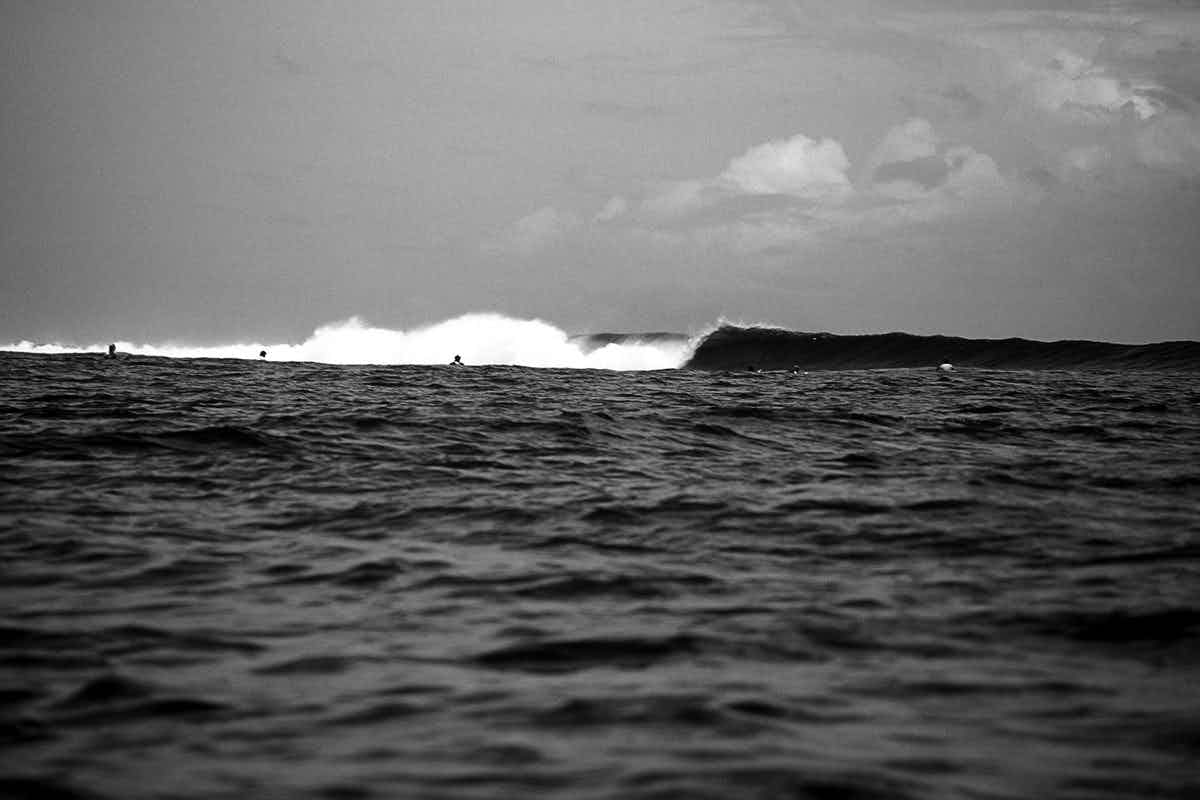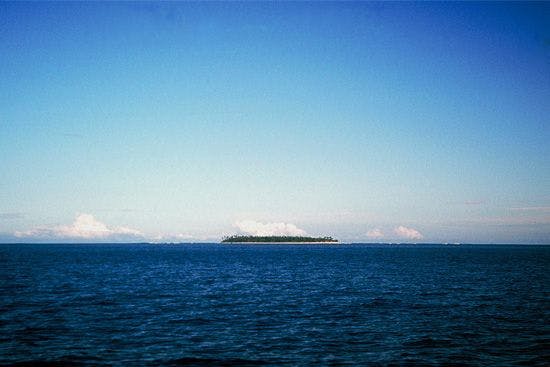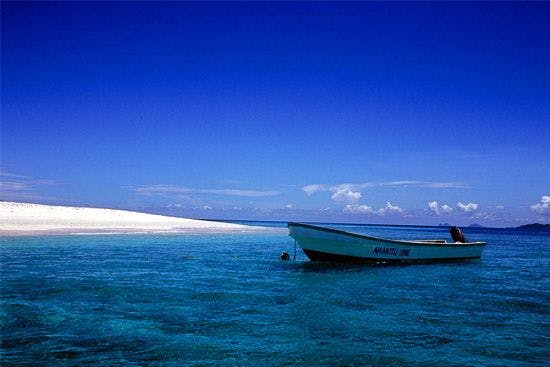Magazines, TravelDeparture Gate: Fiji

Words and images by Mat Arney
The transitional seasons of late autumn and early spring can sometimes make the process of selecting a surf vacation destination a difficult (although never unwelcome or unpleasant) decision; will you luck into the desired combo of solid, late wintery swells and warm, summery weather? The Fijian islands, sitting pretty in the South Pacific, offer up a pretty safe bet for great waves and good weather in November.

Photo: Approaching the island of Tavarua, by Mat Arney
An archipelago of more than 332 tropical volcanic islands spread across 75,000 square miles of the South Pacific Ocean, Fiji is home to a multitude of high quality waves that break on it’s fringing coral reefs. It’s also pretty much the template for every image of “tropical perfection” that travel agents and tourism companies try to tempt us with: Perfect white, sandy beaches? Check; Coconut-laden palm trees? Check; Crystal clear water? Check. You get the idea.

Photo: One rolls through unridden at Cloudbreak, by Mat Arney
The jewel in Fiji’s surfing crown is undoubtedly Cloudbreak, a world-class left hand reef break that sits just off the island of Tavarua. Tavarua was the first high-end luxury surf resort when it opened its doors in the 1980s and thanks to an agreement with the local government the resort enjoyed exclusive rights to the island and the waves that broke over its “fishing grounds”, which included the reef breaks at Cloudbreak and Restaurants. In 2010 a decree was passed that revoked this exclusive access to the waves, and surfers no longer have to pony up hundreds of dollars per night to stay on the island or chance it during the Sunday morning “change over” slot between departing and arriving guests. This does mean that these waves are (inevitably) more crowded than before, however just as it does everywhere else, increased swell size often does a good job of thinning out the number of surfers in the water. For now though we’ll avoid the debate over whether or not anyone can truly own a wave and charge you to surf it, and focus on the waves themselves.
Cloudbreak is a world famous left-hander that breaks consistently over an outside reef and is capable of holding frighteningly large swells. Breaking around the north side of the island of Tavarua is Restaurants (which is predictably in sight of the resort’s restaurant) that, although rather inconsistent, is a long, walled up and mechanical left when it breaks.
The neighboring island of Namotu also enjoys great waves, with a left-hander breaking along the edge of its fringing reef straight out front and the high tide right at Wilkes Pass just to the north.

Photo: Namotu, by Mat Arney
Being that the three most famous Fijian waves are lefts, you could be forgiven for thinking that Fiji is a destination most suited to those who put their right foot forward with the other half of the surfing population having to grab a lot of rail. There is balance in opposites however, and facing many of the left hand reef passes or on the other side of islands there are often right handers offering some forehand respite to the regular-footers. The only real beachbreak to offer an alternative to the reef breaks offshore can be found at Sigatoka further to the south on the main island of Viti Levu.
Whilst you’ll no longer have to pay to play at surf spots in Fiji, getting to many of the islands and reef passes from wherever you end up staying will most likely involve enlisting the services of a local boatman, so budget accordingly. It’s probably also worth considering that you’ll be staying near to some prime dive locations, so if the ocean fails to co-operate on the surface then you can still enjoy it’s submarine pleasures with a mask and snorkel or scuba tank.
November sees the start of Fiji’s warm (and wetter) season with less chance of really large south swells but also less wind, making it much more accessible and user friendly to the majority of travelling surfers. The beauty of travelling to surf an island archipelago with no continental shelf though is that, with some flexibility, you will almost always be able to find somewhere good to surf whatever conditions you are faced with.
WHERE: Nadi, Fiji (NAN)
WHEN: March to November
WHY: World class left hand reef breaks and tropical perfection.
HOW: Step-up shortboard and/or semi-gun.